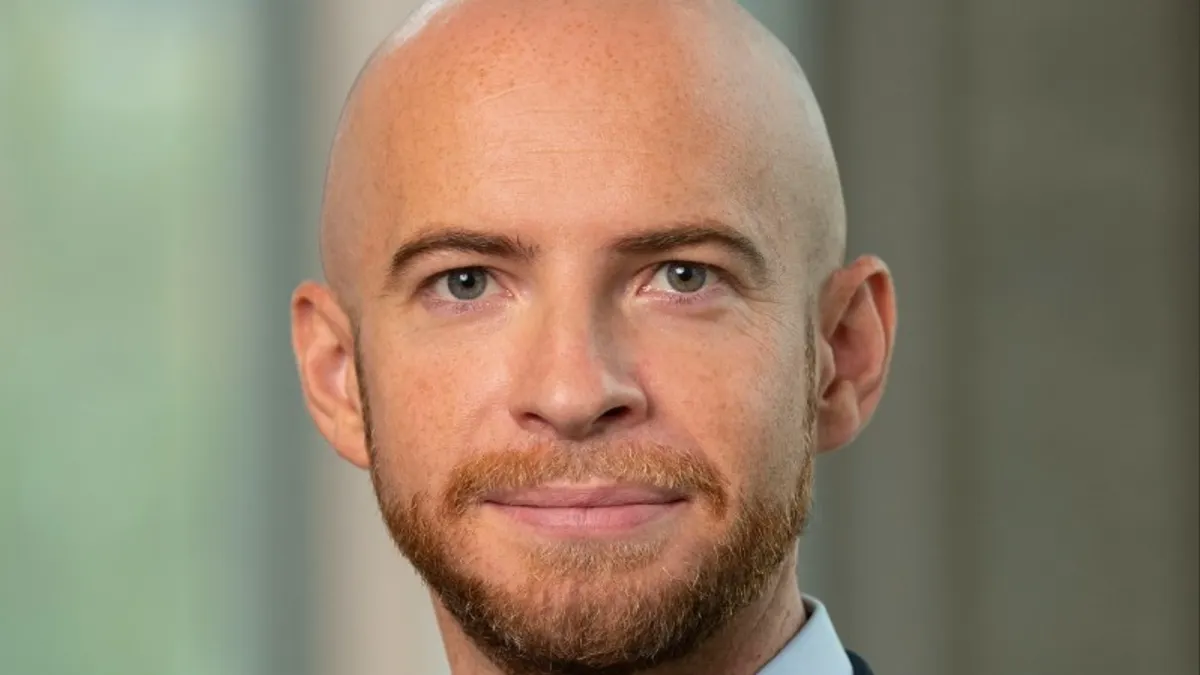Months after pulling its only approved product from the market, Amylyx Pharmaceuticals looks to be staging a comeback — this time in the red-hot GLP-1 space. But they’re not chasing an obesity indication. Instead, Amylyx has picked up a mid-stage candidate they say could become a first-in-class treatment for other conditions related to blood glucose balance.
Earlier this month, the company announced it laid down $35 million to buy a phase 3-ready candidate called avexitide at a bankruptcy auction for Eiger BioPharmaceuticals.
The candidate targets the GLP-1 hormone, but unlike blockbuster obesity drugs that work as an agonist for GLP-1, avexitide is an antagonist that raises blood sugar while lowering insulin levels. So far, the drug has shown promise in two conditions marked by this one-two punch: hypoglycemia following bariatric surgery and congenital hyperinsulinism. Because of the drug’s track record in the clinic, Amylyx is banking on one late-stage trial to start in the first quarter of 2025, with the hopes of a data readout in 2026 and a launch the following year.
“We want to balance the normal glycemic control and response, and [avexitide] has the potential to be a first-in-class drug to manage diseases associated with that.”

Justin Klee
Co-CEO, Amylyx Pharmaceuticals
While the company is not currently guiding on the market potential for either indication, Amylyx’s co-CEOs, Josh Cohen and Justin Klee, said that post-bariatric hypoglycemia impacts about 160,000 people in the U.S.
“This is a really disabling condition,” Klee said. “Many of these patients don’t leave their homes and need care around the clock because they don’t know when they’re going to have an episode like an unexpected seizure or pass out.”
If approved, avexitide could bring a needed new option for both indications.
“We think there is a really high potential for avexitide,” Klee said. “And the data has gotten our people really excited too.”
The foray into endocrine diseases marks another sharp turning point for Amylyx.
The FDA OK’d the company’s Relyvrio for ALS in 2022 based on positive mid-stage data suggesting it could slow disease progression. But this spring, results from a confirmatory trial showed it performed no better than placebo. In the wake of the disappointing results, Amylyx took Relyvrio off the market and laid off about 70% of its staff.
With its roots in the neurodegenerative space, Amylyx’s work with the compound continues. Dubbed AMX0035 in clinical trials, the drug is in mid-stage development for Wolfram syndrome, a rare genetic condition that can be fatal.
Amylyx also has another up-and-comer for ALS called AMX0114 in early-stage development that targets calpain-2, which research has linked to neuronal death.
Here, Cohen and Klee reflect on what they’ve learned from their experience with Relyvrio and how they’re carrying those lessons forward with their other candidates in the pipeline.
This interview has been edited for brevity and style.
PHARMAVOICE: What was your No. 1 takeaway from the experience of Relyvrio’s failure in ALS?
JUSTIN KLEE: One that I’m really proud of is the study we ran, and I think our team is, too. The team executed a large multinational, complex phase 3 study, and they did it efficiently [with] a patient-centric design.
The challenge is that these are hard areas of development, and although the outcome wasn’t what we hoped for, the trial ran well. The main takeaway is that we have the team, the resources and the operations to see these promising treatments through development, and if they work, to get them to thousands of people.
JOSH COHEN: One other thing we’re excited about as we move into future trials is the use of biomarkers. That is inherently more challenging in ALS, but it has come a long way. As we go into our next trial in ALS, we’re going to use a lot of the recent biomarker insights to increase our confidence as we get the data.
We’re similarly looking at biomarkers with Wolfram syndrome, and with avexitide, we have the benefit of looking at objective measures like hemoglobin A1C [for blood glucose levels], which is one of the oldest biomarkers there is.
Did the Relyvrio setback make you rethink the science behind the drug or your approach to ALS?
KLEE: We continue to believe strongly that targeting pathways of neurodegeneration are critical in these diseases. What has changed is our understanding of those pathways, and our ability to target them has gotten better.
Our treatment [AMX0114 in ALS] has been researched as a target for decades. But it is hard to target just calpain-2 and to get enough exposure in the brain and spinal cord. Now we have an antisense oligonucleotide that we can administer [so that] we know we’re only hitting calpain-2, and we know we’re getting brain and spinal cord exposure at therapeutic doses. The approach of targeting neurodegeneration in a meaningful way has grown by leaps and bounds.
COHEN: There continues to be tons of great work in ALS [and] we improved how we measure outcomes. We improved how we’re looking at biomarkers and there’s a lot of thought and debate about how we can discern signals from noise, and a ton of publications about the underlying biology around genetics, etc. ALS does benefit from having quite a lot of research, especially for a rare disease, [and] we try to stay close to literature. We’ve kept a running tally of the targets that are most interesting to us to go after and calpain-2 had long been the target we were most excited about. It was one of those targets where it felt like it was a shame it hadn’t been pursued in the right way.
With avexitide you’re pursuing hypoglycemia following bariatric surgery. But there’s some evidence that demand for bariatric surgeries is going down due to the effectiveness of GLP-1 agonists. What does the long-term market look like for avexitide?
KLEE: We’ve seen that agonists of that receptor are powerful across many different diseases and conditions because GLP-1 is one of the master regulators of the glucose insulin balance. So in these diseases, the agonism of the GLP-1 receptor is beneficial. But that’s only half of the equation … and we haven’t been as good at the other side, which is hypoglycemia and hyperinsulinism. We want to balance the normal glycemic control and response, and this has the potential to be a first-in-class drug to manage diseases associated with that.
Bariatric surgery can be used for a number of reasons outside of weight loss. Over the past 10 years there have been at least 2 million of the most common types of bariatric surgeries in the U.S. — well over 200,000 annually. That may decrease with GLP-1 agonists, but even if it does by 10% it’s still a substantial number of procedures.
We’ve further heard some of the opposite, which is that because weight loss is becoming more mainstream and talked about, and in certain clinics, some doctors have seen surgery numbers for obesity go up with this awareness.
The last time I interviewed both of you, we talked about the co-CEO model and why it can be a good fit in the pharma industry. How did that model hold up during the last few months in a time of crisis?
KLEE: It was such a blessing once again. You have limited time to make really important decisions and when you have someone you can talk to and trust, and feel like you can both split up what you need to tackle, it’s so much better. But more broadly we are so lucky to have a great team who very quickly aligned. There was no argument or disagreement — it was about how to do what we needed to do in the best way possible. It was a hard time, but I’m proud of how we did it with transparency about results while providing access for free to ALS patients who wanted to continue taking it.
COHEN: The strengths of the co-CEO model are magnified in a crisis where there are not enough hours in the day and things can be emotionally taxing. Having more than one leader in times like that can be helpful to work through all the issues.

















